Authenticity Control
In this article, we will thoroughly introduce each authenticity feature individually.
A set of security elements depends on the country and document type. You can find the all information about specific security checks for each documents in Regula Document Reader Documents database.
The following table outlines the authenticity features and where they can be verified.
| Authenticity Feature | Web Service | Mobile SDK | Mobile Devices: 1120 / 7310 | Desktop Devices |
|---|---|---|---|---|
| Image patterns | ||||
| Liveness | ||||
| Barcode format | ||||
| Portrait comparison | ||||
| Photo embedding | ||||
| Security text | ||||
| IPI | ||||
| Encrypted IPI | ||||
| UV dull paper | ||||
| UV fibers | ||||
| IR visibility | ||||
| IRB900 | ||||
| Extended MRZ | ||||
| Extended OCR | ||||
| Axial protection |
Let's explore each authenticity feature in detail.
Image patterns
As protection against counterfeiting, most documents have unique patterns (elements of documents), which can appear or change their shape in different types of light. This authenticity check compares the shape, size, color and location of such objects (patterns) with the reference ones stored in Regula Documents Database. The check is performed in White, UV and IR lights. As a rule, one and the same security feature is checked separately on the document in order to detect partial forgery. For some documents, unique pattern verification algorithms are used, which are aimed at detecting forgeries using solely a document image in White light.

Liveness
The "Liveness" authenticity check ensures the identity document is physically presented. Document Reader SDK evaluates its geometric changes and distortions at different distances for providing the final decision about authenticity. It involves check for the following security features:
| Security element | Web Service | Mobile SDK | Mobile Devices: 1120 / 7310 | Desktop Devices |
|---|---|---|---|---|
| Electronic device | ||||
| Barcode background | ||||
| Black and white copy | ||||
| Hologram | ||||
| OVI | ||||
| MLI | ||||
| Geometry |
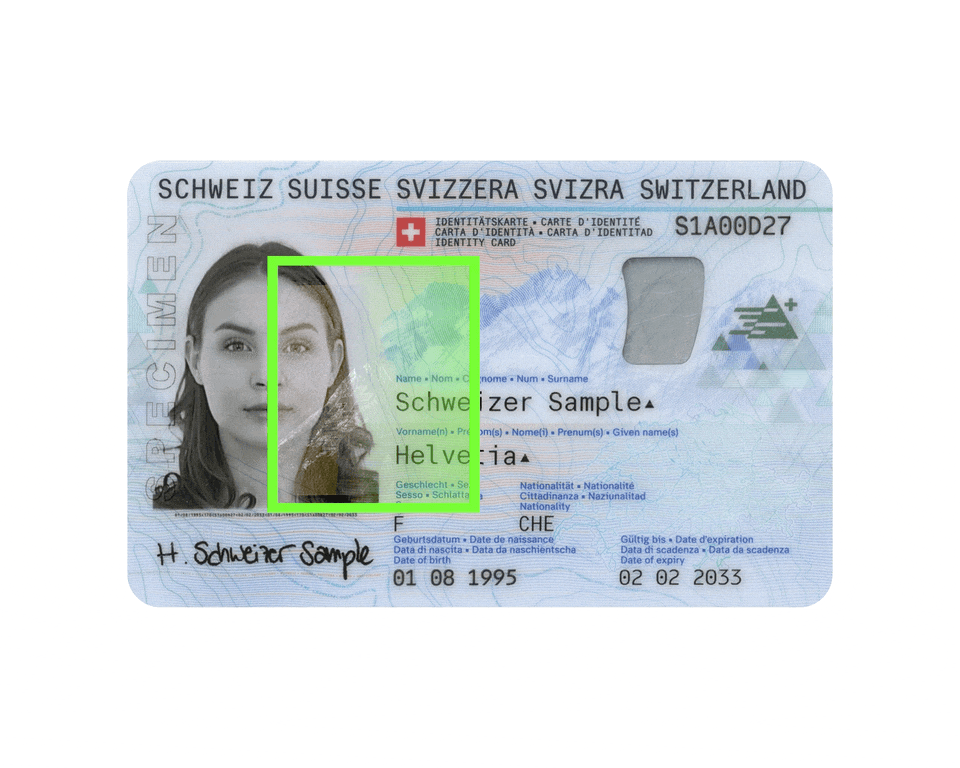
Barcode format
Ensure a barcode is inherent to a specific document, has proper technical and physical parameters, is correctly located in the document, and contains the correct data structure. Document Reader SDK knows what barcode type should be present, what data it should include and how barcode data should be recorded in every single identity document.
Two types of this check are implemented. Since the document description specifies the number and type of barcodes, it checks that all barcodes from the description have been found and successfully read. The second type is a more detailed analysis of the result of decoding twodimensional barcodes. The barcode is considered fake if the number of rows and columns does not correspond to statistically valid values. The decoded data are also analyzed. If, for some reason, all the required text and/or graphic fields could not be extracted from these data, the barcode is considered fake. In addition, if the digital signature is present, it is also verified.
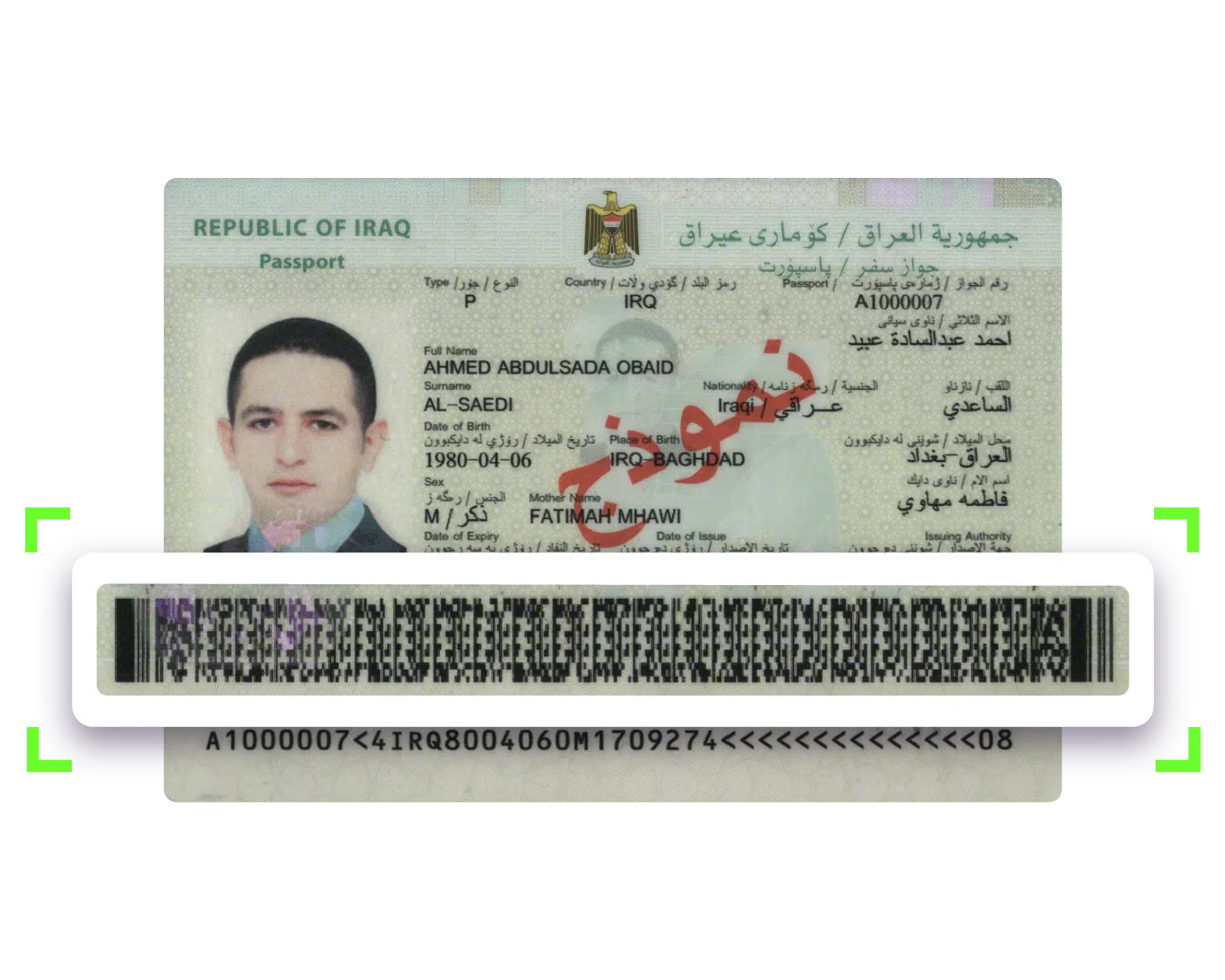
Portrait comparison
The "Portrait comparison" authenticity check ensures that the same individual is present across various photos associated with a document. This involves comparing portraits from multiple sources such as the visual zone of the document (photo and ghost photo), RFID chip, barcode, a selfie from a web or mobile device, and an external portrait from your database. The process verifies identity by cross-referencing these images with the help of Regula Face SDK.
How to Activate Integration with Face SDK
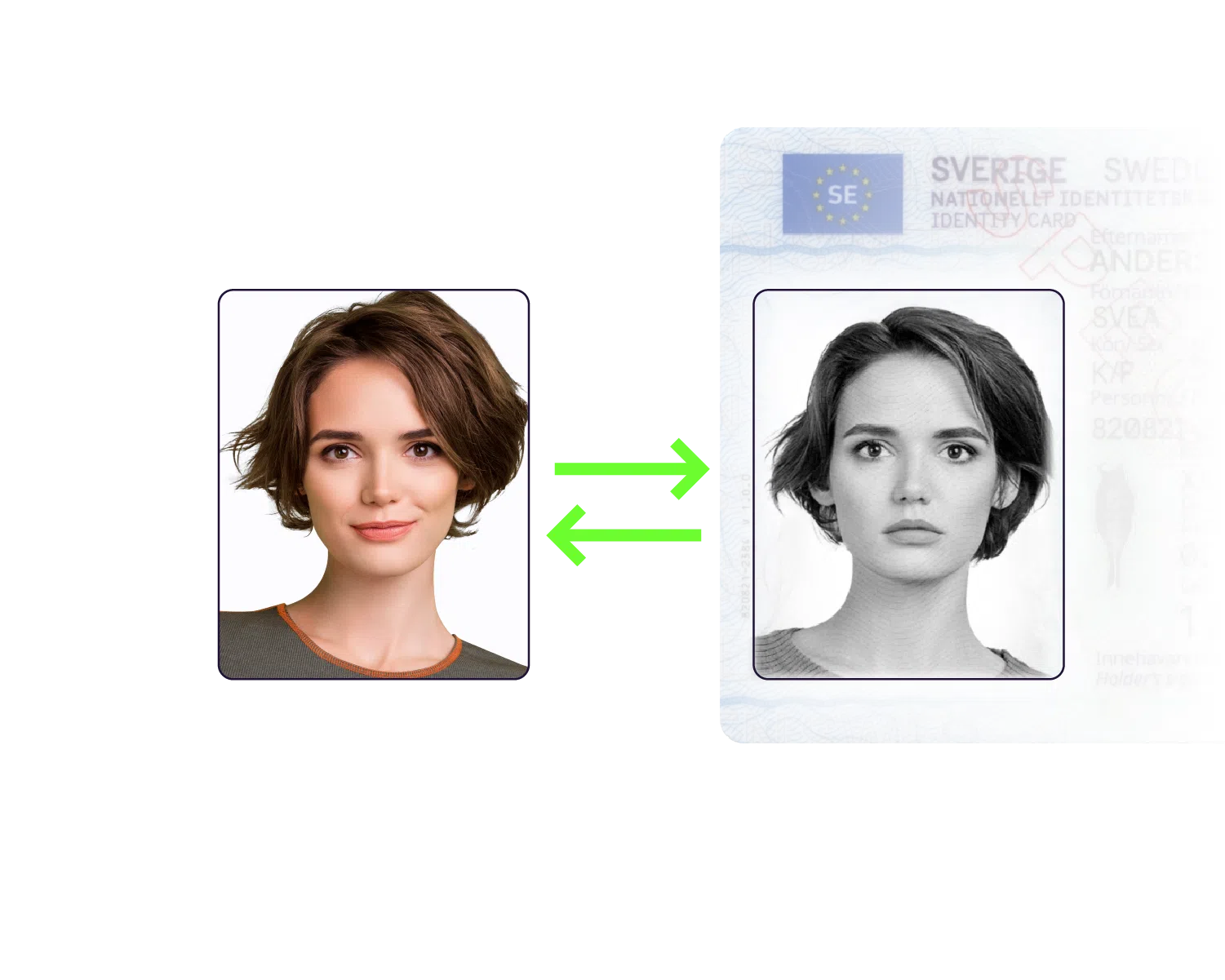
Photo embedding
The "Photo embedding" authenticity check involves verifying if the holder's image in a document matches the specified method of embedding (sticked or printed) as per the Regula Document Reader Documents database. This process includes detecting the boundaries of a glued photo if it should have been printed. It also involves checking for photo landmarks, the presence or absence of a face, and LASINK technology.

Security text
Sensitive personal text data can be printed both in visible form (seen with the unaided eye under the regular white light) and in the hidden form (discoverable only under the UV light). This authenticity check reads data in either visible or both visible and UV lights and performs cross-comparison. In addition, the color of UV-luminescence is checked. Besides, in certain documents, certain fields are not black, but blue, red, or other colors. These properties are also controlled by this authenticity check.

IPI
The "IPI" authenticity check is used to visualize the invisible personal information (IPI) that was applied on the holder's photo during the personalization of the document. As a rule, it is either the document number or the holder's name/surname. If these data are missing, it's a sign of forgery. The requirement to conduct IPI is no less than 400 DPI of the document image.
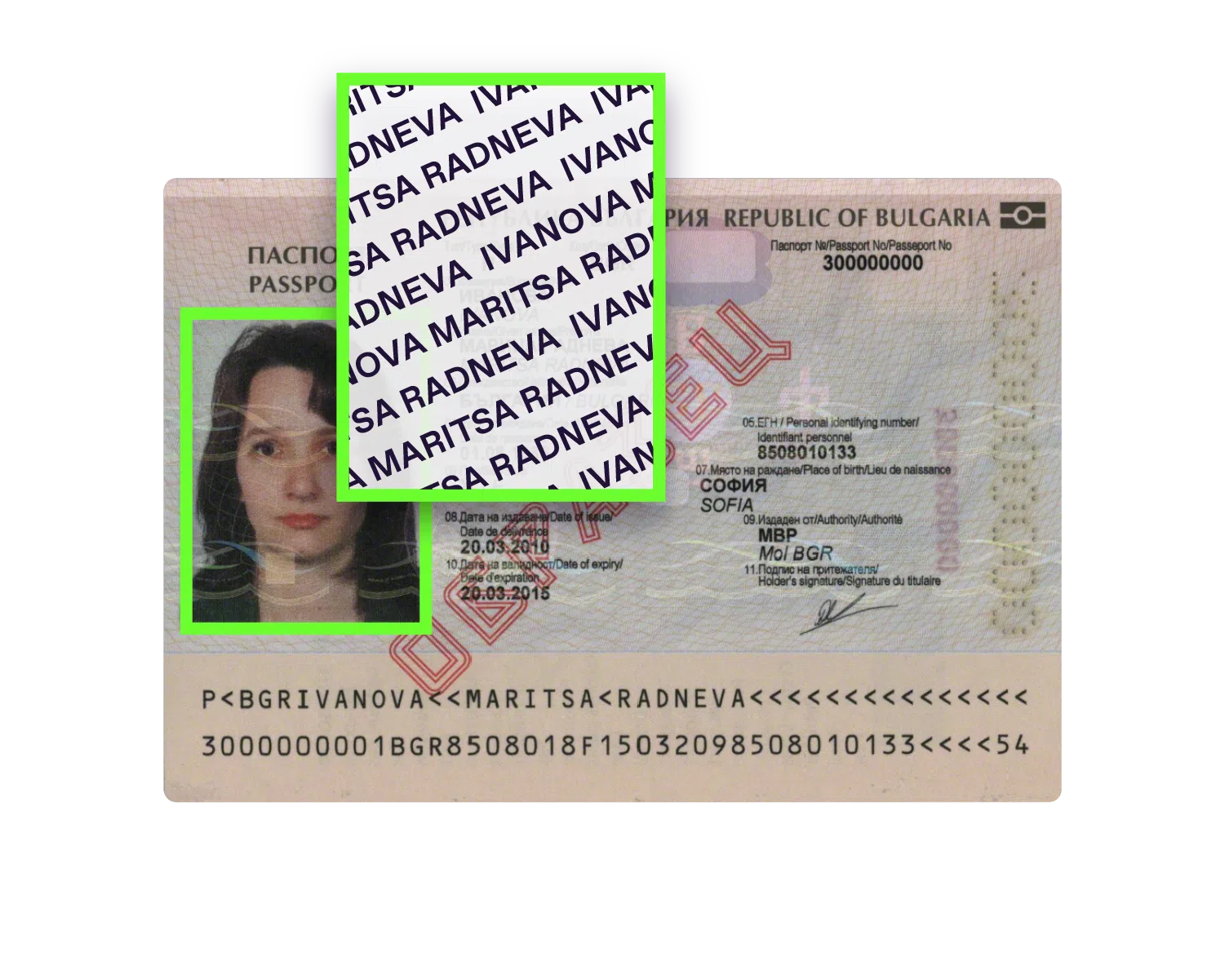
Encrypted IPI
The "Encrypted IPI" authenticity check is used to visualize the invisible personal information (IPI), hidden in a 2D-barcode, that was applied on the holder's photo during the personalization of the document. As a rule, it is either the document number or the holder's name/surname. If these data are missing, it's a sign of forgery. The requirement to conduct the Encrypted IPI check is no less than 400 DPI of the document image.
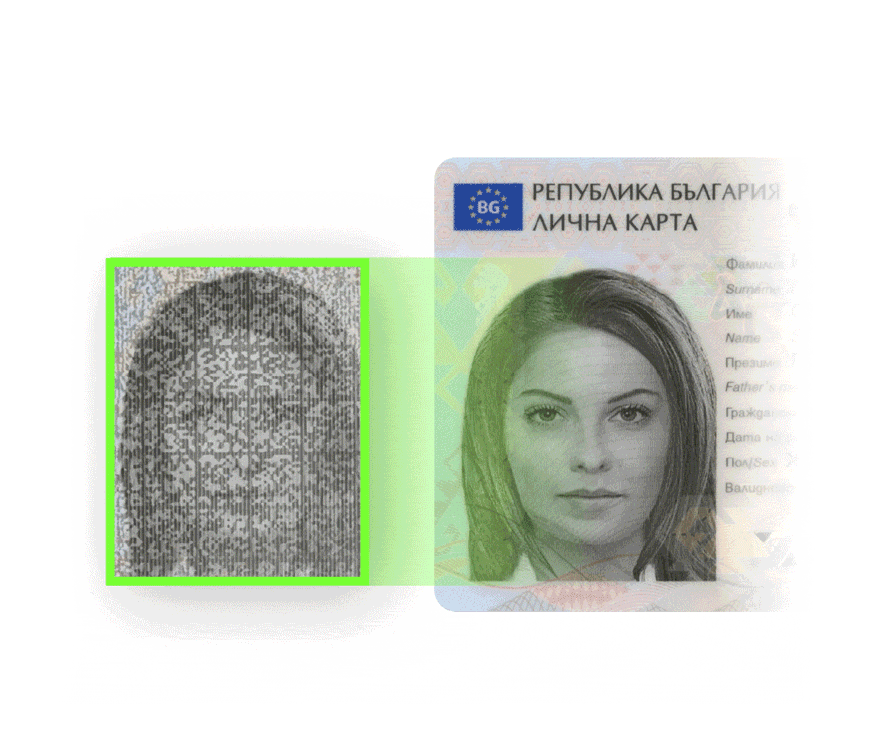
UV dull paper
In the production of most documents, manufacturers use materials that do not luminesce in UV light, unlike regular paper. Moreover, many adhesive substances have luminescent properties. This authenticity check is aimed at detecting forged documents, which were made using paper. It checks the entire document page as well as the MRZ area separately. For documents where the holder's photo is not luminescent, the photo area is also checked to detect photo substitution. In addition, each of the MRZ symbols is analyzed in order to detect the presence of adhesive residues. This check is used to identify fraudulent documents, in which separate characters have been replaced.
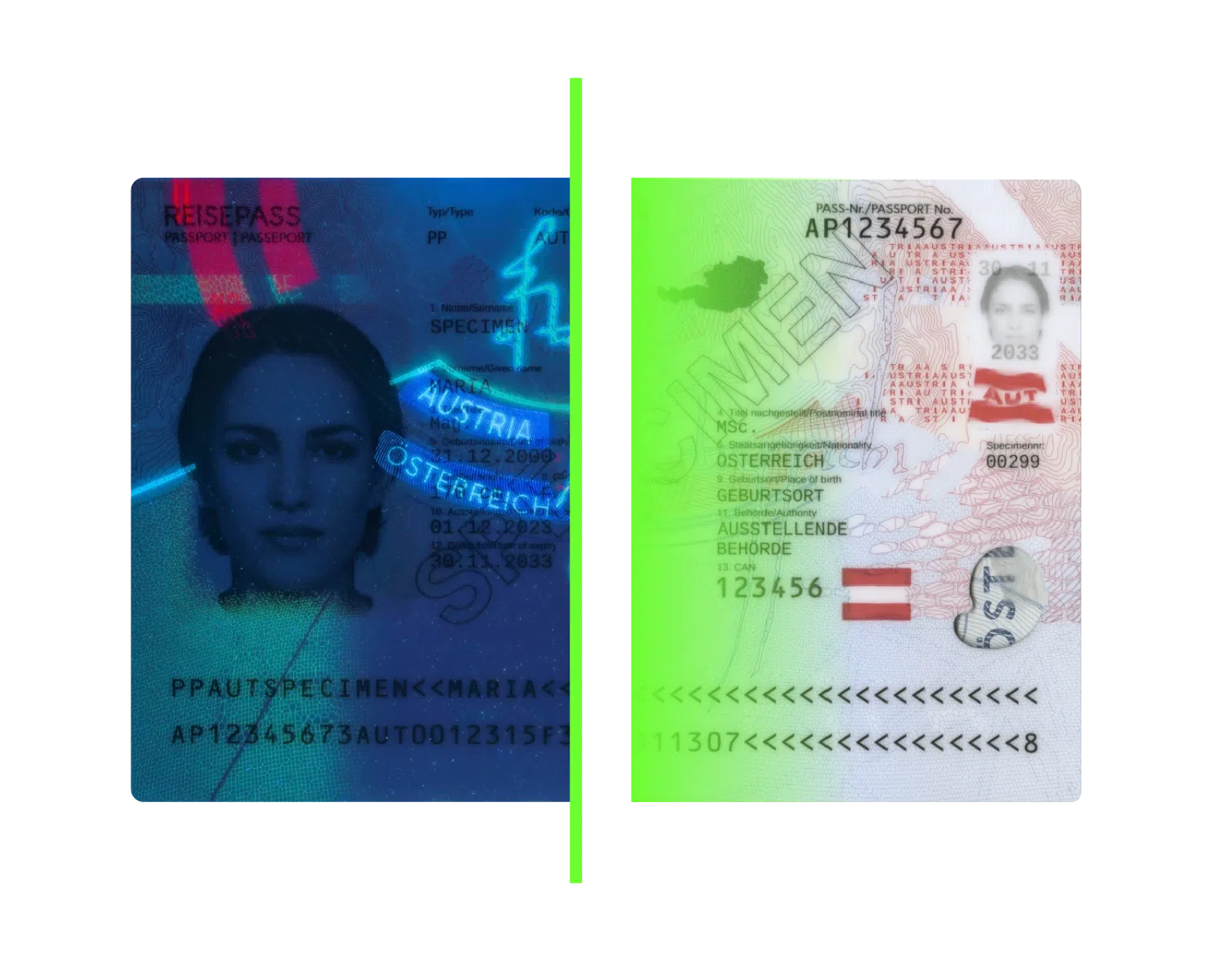
UV fibers
In the process of document production, special flexible fibers are added to the paper mixture. These fibers can be both visible and invisible in White light and have luminescent properties in UV light. The number of fibers and their locations are unique for each document sample, but the color of luminescence and physical sizes remain constant within one document type. This authenticity check searches for fibers of a specified color and assessing their shape and size. Objects that imitate fibers are also controlled: if they are detected, the document is considered fake.

IR visibility
Elements of the document page, holder's photo, ghost photo or personal data can be both transparent (invisible) and opaque (visible), or partially visible in IR light. In forged documents, these requirements may not be met. This authenticity check analyzes the contrast of all these elements in IR light. Special attention is paid to the photo. In some documents (more often on a polycarbonate base), the photo in IR light completely matches the photo in White light ‒ this is also controlled by this check. In the documents, where the holder's photo is partially visible, those parts of the photo that shall be visible according to the results of image statistical analysis (for example, black hair or clothes) are checked. In addition, in some documents, the outlines of the images in White and IR lights are checked, which helps to identify cases where a fake photo has been applied over the original one.
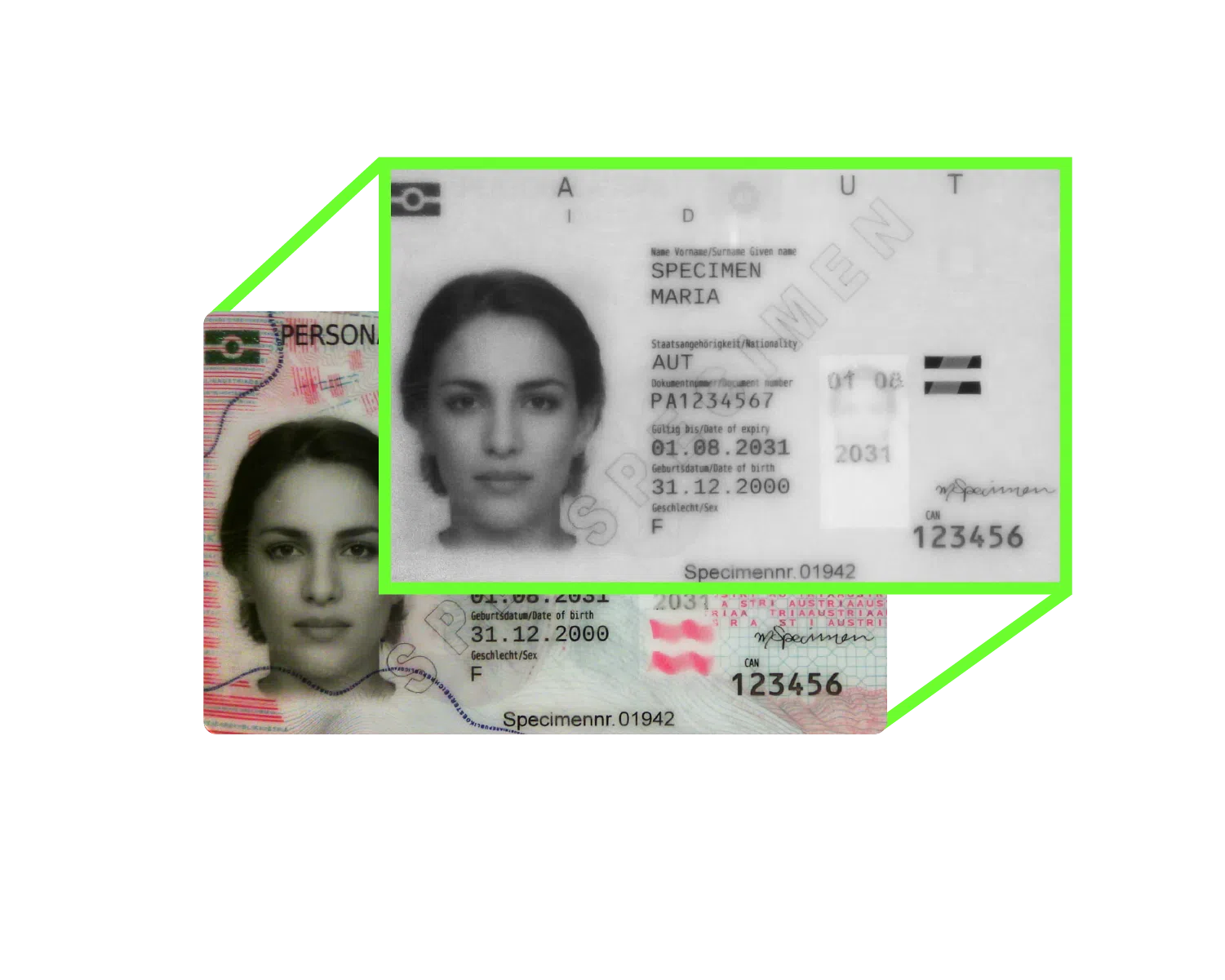
IRB900
In accordance with ICAO requirements, MRZ characters shall have a certain contrast in IR light. This authenticity check controls the compliance with these requirements. It checks each character, thus helping to identify cases of alteration of MRZ parts, such as dates and check digits.
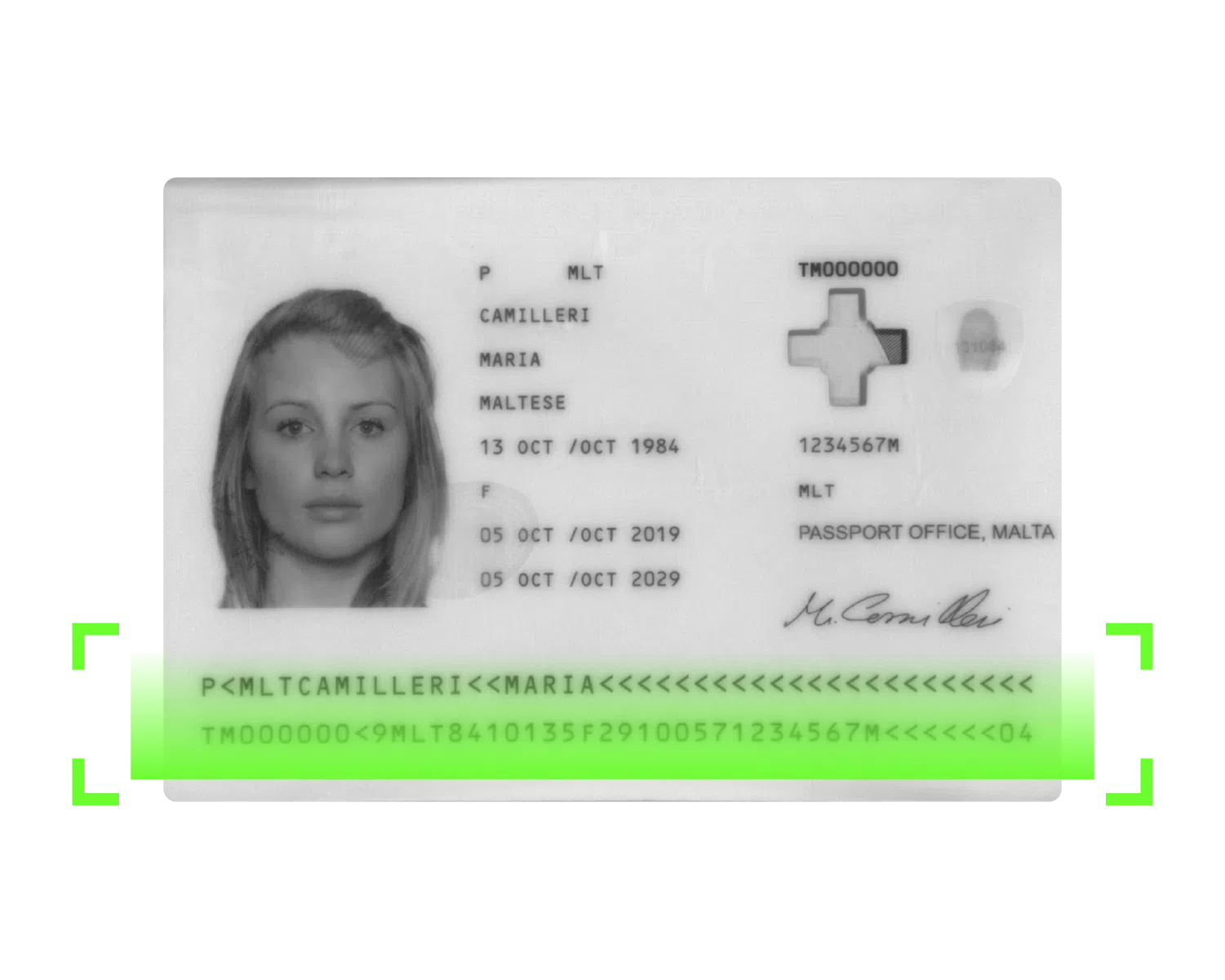
Extended MRZ
Extended MRZ check utilizes the Regula Document Reader Documents database to ensure comprehensive verification. This check validate the authenticity of various document attributes, including the background, resolution, dimensions. Additionally, the spacing of fonts and the precise alignment of lines within the MRZ are examined.
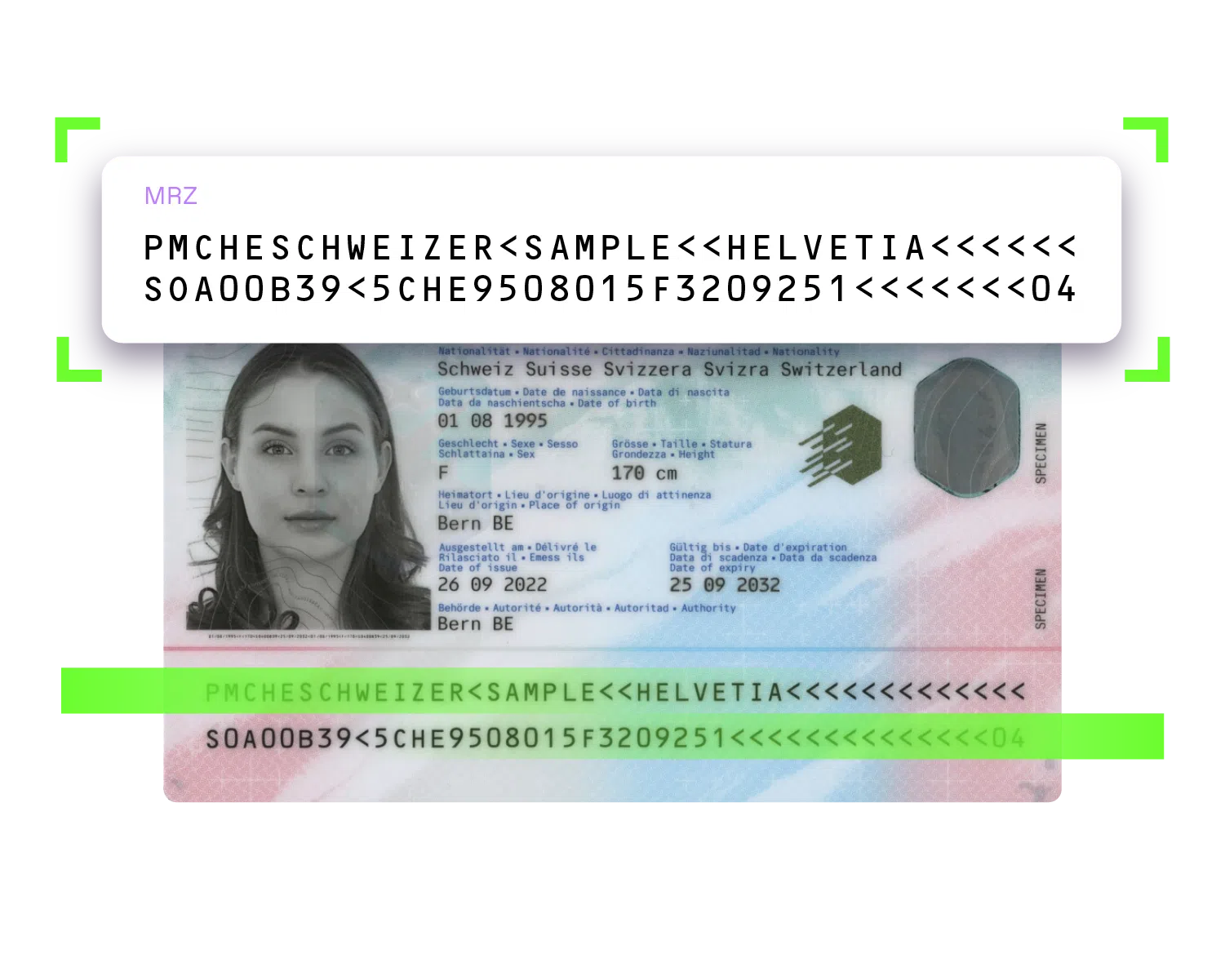
Extended OCR
Extended OCR check involves controlling the quality of personal data printing and its precise positioning on identity documents. This process ensures that the text is printed clearly, and matches the document's template position relying on the Regula Document Reader Documents database. It also verifies that all personal information, for example, names, dates, and identification numbers, is correctly aligned and placed in the designated areas according to the document's template.
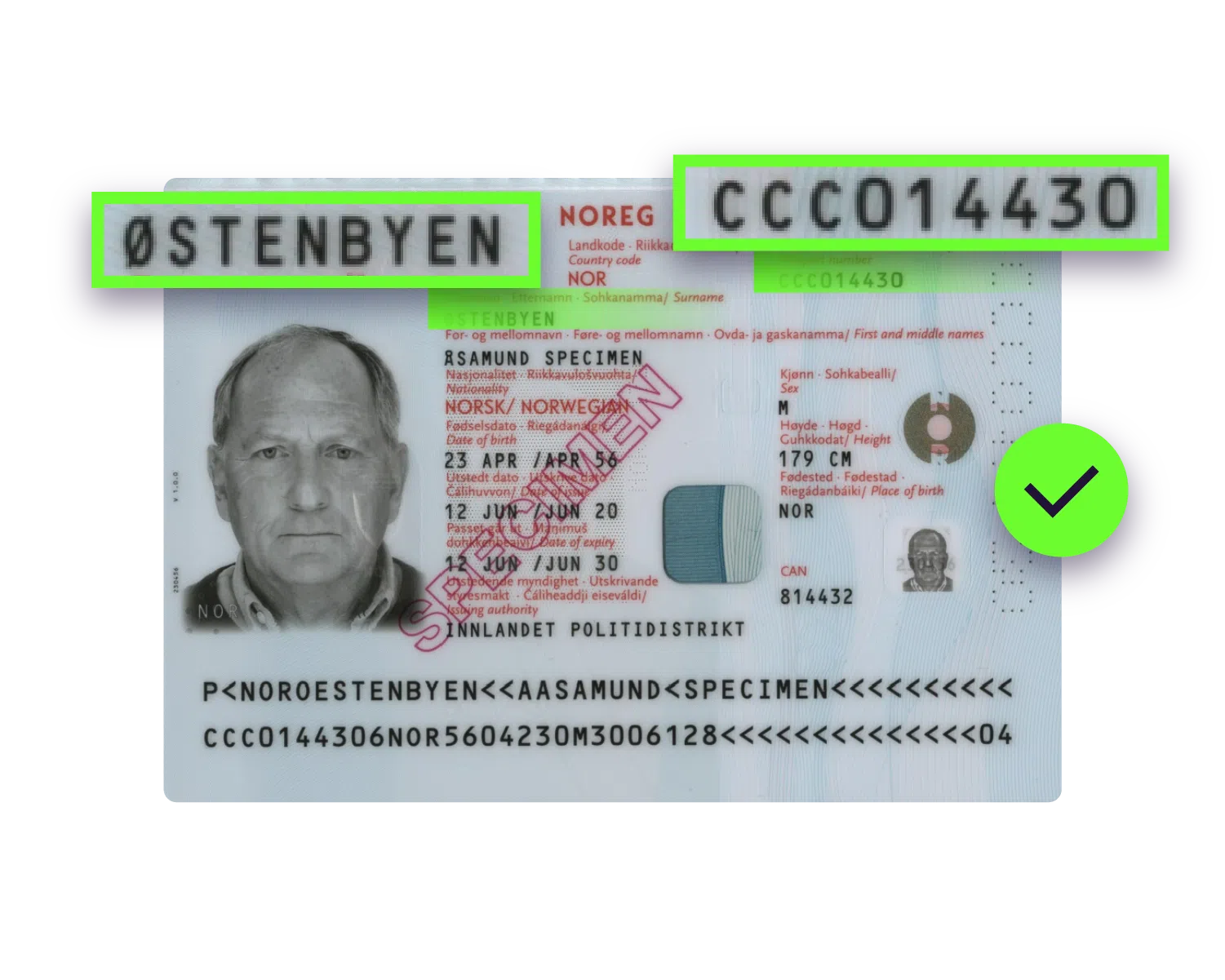
Axial protection
This authenticity check is used for the documents that are produced using a special laminate film that breaks when trying to separate it from the document. To visualize this type of protection, a special illumination scheme is used, in which the angle of observation and the angle of illumination coincide. In those document parts where the laminate has been peeled off, dark areas appear. This authenticity check detects such areas on documents.